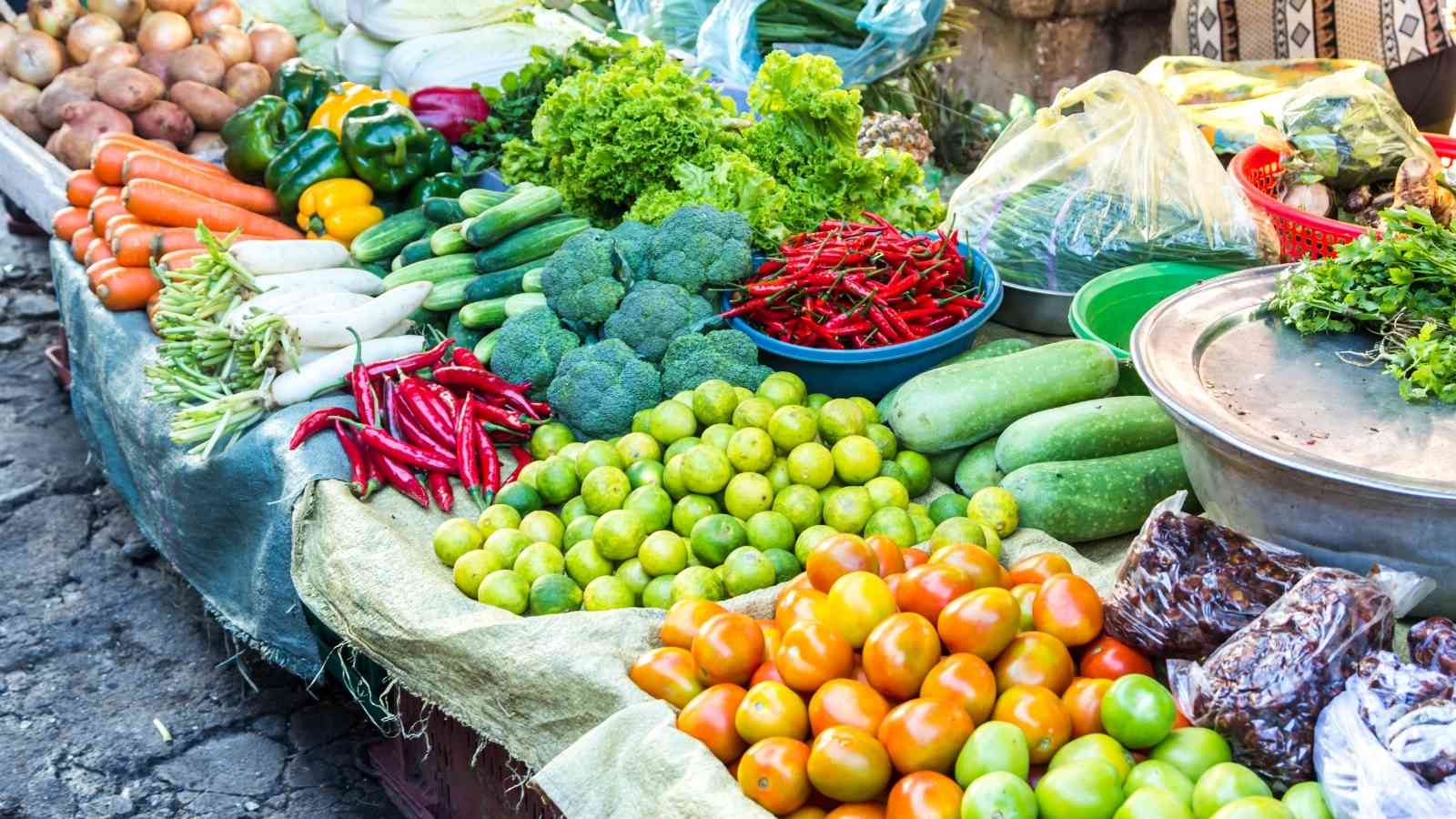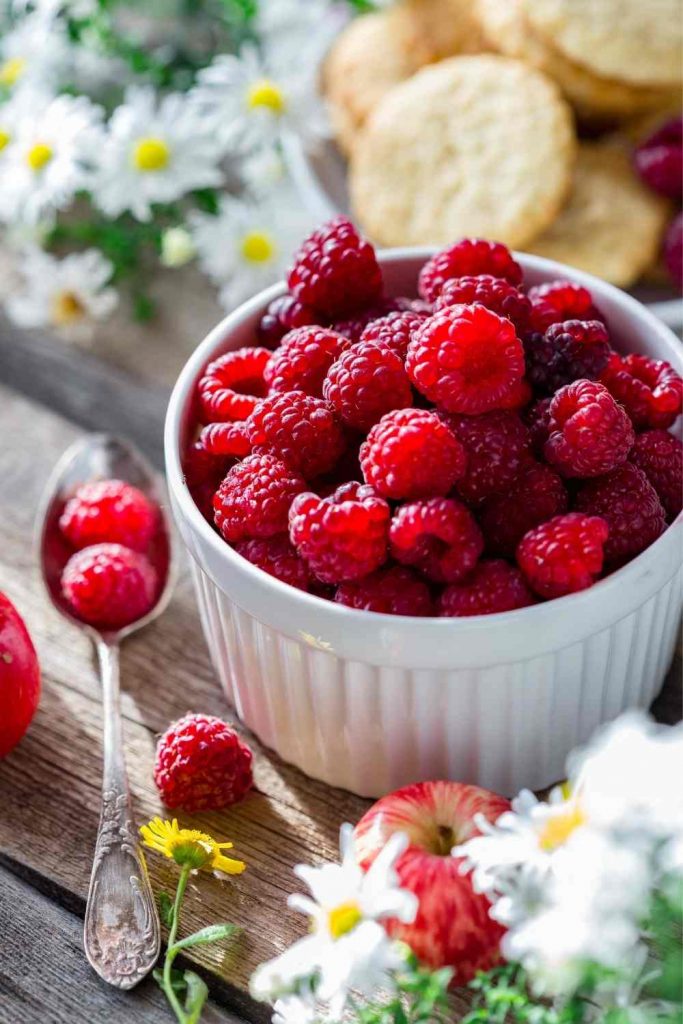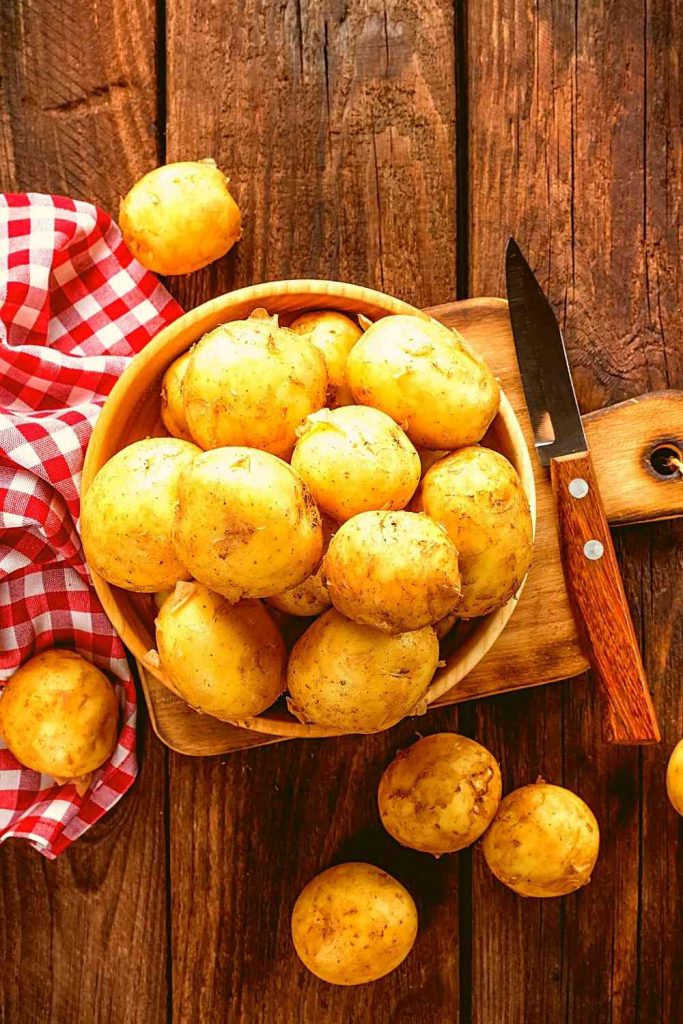Are you weary of tossing away moldy, discolored, or wilted fresh produce? It makes a great difference how you keep your fresh vegetables. Some fruits and vegetables like damp and cool temperatures, while others prefer to be kept dry or at room temperature. Although you should purchase root veggies with their green tops since they are fresher than those without, it is advisable to clip them off for longer storage.
Spend a few additional minutes packing the veggies instead of placing them in the fridge in their original packaging to extend their shelf life. Here are a few pointers to help you get the most out of your fruit.

Storage of Fresh Produce
Jump to:
1. Asparagus
When asparagus stalks are wrapped in grocery store packaging, the sensitive tips rapidly wilt. Fill a large glass halfway with cold water to keep it fresh for longer. Remove roughly 1 inch of the spear's stem end. Make sure all of the asparagus stem ends are submerged in the water by standing it up in the glass. Refrigerate the spears for approximately a week after covering them with a plastic bag.
2. Berries
Berries often spoil before we can consume them all. Giving bacteria a brief bath in a mix of 1 part vinegar to 3 parts water is one approach to halt their development. Before putting the berries in a paper towel-lined container or a berry bin, drain and rinse them completely.

3. Celery
Celery lasts longer when firmly wrapped in aluminum foil, which may surprise you. The disadvantage is that you can't tell how the celery is doing without unwrapping it and examining it periodically. Because celery is 95% water, it makes it logical to keep it in water. Cut the celery into shorter pieces and place them in a jar with water. Refrigerate.
4. Corn on the Cob
Wrap ears in damp paper towels and keep them in their husks. Place the wrapped ears in a plastic bag that hasn't been sealed and stored in the crisper drawer.
5. Cucumbers and Squash in the Summer
The seedless cucumbers are shrink-wrapped for a purpose. Wrapping entire cucumbers and summer squash in plastic wrap or using a produce bin is the best method to keep them fresh for longer.
6. Ginger
Place the ginger root in a plastic bag with as little air as possible or in an airtight container. Keep it in the crisper drawer of the refrigerator. You may freeze whole or chopped ginger root to make it last longer. Alternatively, peel and grate it, then freeze it in an airtight container.

7. Tender Greens and Lettuce
Lettuce leaves should be washed and dried in a salad spinner or with paper towels. Wrap them loosely in dry paper towels and place them in an open plastic bag—or use a produce storage container—to keep them fresh. Because the paper towels absorb extra moisture, the lettuce stays crisp and fresh for longer. If the lettuce becomes too damp, check it often and change the paper towels.
8. Onions
The legs of pantyhose are an amazing technique to keep onions! Fill a clean pair of pantyhose with the onions and tie a knot between each onion. Cut the bottom onion slightly below the final knot to remove it. Another benefit is that the storage container is less cluttered.
9. Cilantro with parsley
These delicate herbs come in bunches, and it might be difficult to utilize them all before they go bad, even when kept correctly. Plastic bags with a folded piece of paper towel should be used to store cleaned and dried bunches. Chop these important herbs and freeze them in water in ice cube trays to increase their shelf life. The herbs will not be tarnishable, but they will be ready to add to soups, stews, and other prepared foods.
10. Potatoes
Always keep potatoes and onions separate. Onions emit gases that cause potatoes to sprout too soon. If the potatoes were packed in a plastic bag, transfer them to a mesh bag or basket to avoid moisture.

11. Scallions
Did you know that onions can be grown from seed? Place the root ends in a tiny quantity of water after cutting them off. Check them on a regular basis; refill the water and replace the container as needed.
12. Tomatoes
Tomatoes are a bit more difficult to store. Unripe tomatoes should be kept on the counter until they mature. Tomatoes that are fully ripe should be refrigerated at roughly 55 degrees Fahrenheit. This may be a difficult task. In his book On Food and Cooking, author Harold McGee advocates putting tomatoes out of the fridge a day or two before eating to allow them to restore their taste. Another great choice is a wine refrigerator.
13. Vegetables in Excess
Do you have a lot of miscellaneous items lying around? When you have excess veggies that you won't use right away, chop them up and blanch them in boiling water according to the instructions. Drain the blanched veggies and place them in freezer bags to use in soups and stews later.




